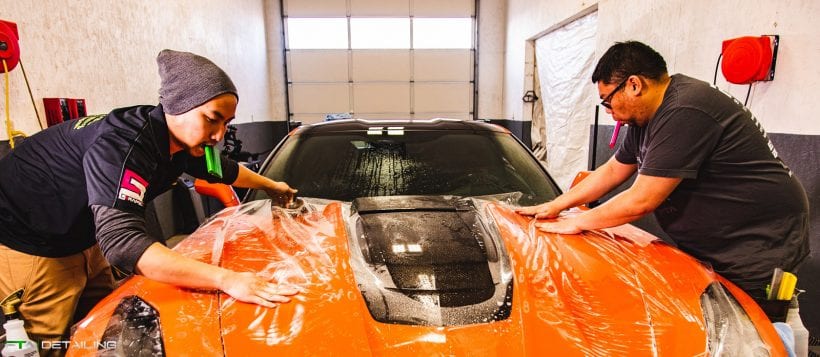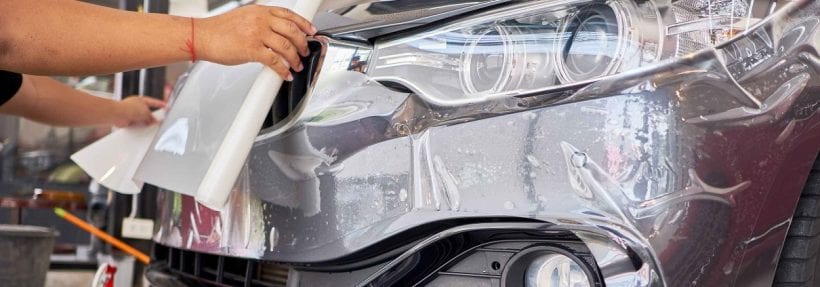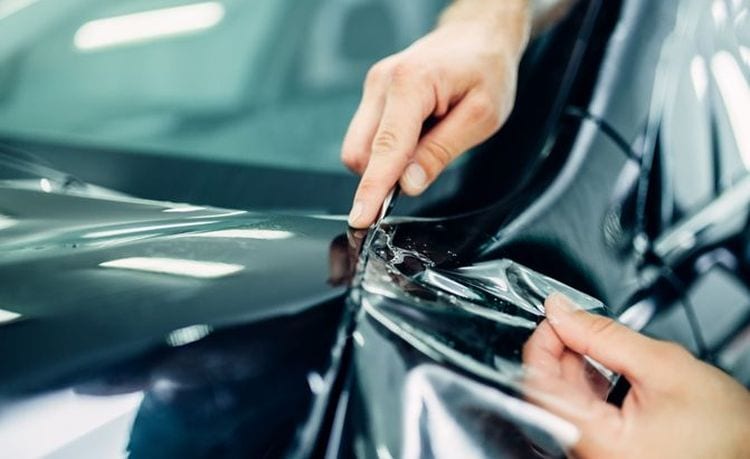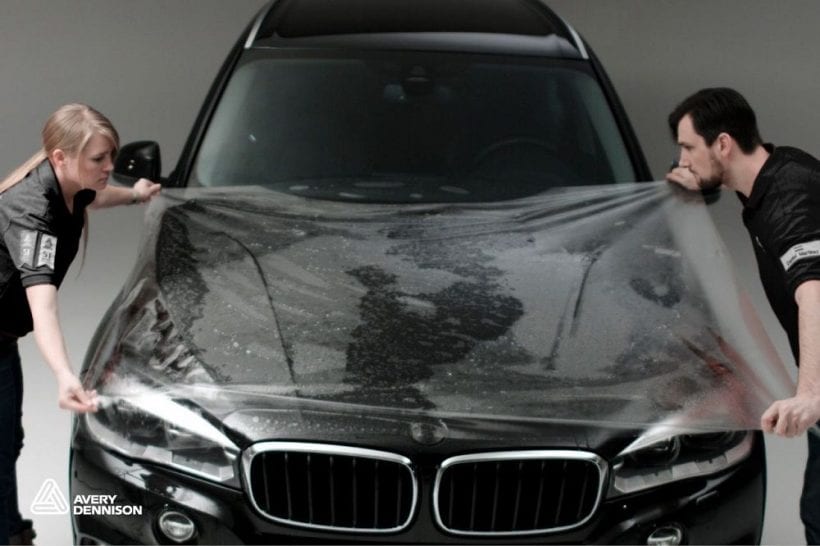For a long time, there was only one definite way that you could be confident your car would be kept looking pristine and protect it from the elements; unfortunately, it meant not being able to take your car out of the garage. Of course, while this might be the simplest way to remove the worry of chips and scratches, this approach also prevents you from getting any sort of enjoyment out of owning a car. Thankfully, for the car enthusiast who enjoys their vehicles both visually and in motion, there is a simple three-letter solution to protecting your car: PPF, or Paint Protection Film.
What is PPF?
Car paint protection film from Avery Dennison is a durable, clear, and flexible covering for your vehicle, usually constructed out of acrylic, urethane, or polyurethane film. When applied to a car’s surfaces, it offers a simple method of safeguarding your vehicle against the wear and tear of the road. It includes defense against stone chips from debris, environmental pollution and contaminants, insect stains, bird excrement, and common abrasions, as well as some protection against scratches (accidental or otherwise) that you may collect throughout the day. This means you can save time and money in the long run on paint repair jobs while keeping your car looking fresh and maintaining its resale value for longer.

How does it work?
Aside from just offering an extra protective layer to prevent paint damage, a high-quality thermoplastic polyurethane (TPU) film also has the added benefit of room temperature ‘self-healing’ performance and up to 10 years of additional UV resistance, to act as a shield against fading from sun damage. Additionally, TPU is easy to trim and just as easy to remove, and when administered by a professional, the paint protection film is sure to leave a smooth, even surface and high-gloss finish.
How is it fitted?
While it is possible to fit smaller sections of paint protection film yourself, it is generally a process which is best left to an experienced hand: especially if you want to wrap your entire car. A professional installer will often use templates that have been curated to create a precise, clean fit over your vehicle. Bodywork usually is carefully cleaned and professionally prepared for the application of the film, to ensure that no dirt or debris is trapped under the wrap.
Each section is then hand-applied to the car using water and a slip solution to allow for easy maneuvering of the film into the correct position. Once everything is precisely lined up, the preparation liquid is pressed out, and the film is either wrapped around the edge of each panel or cut flush to the edge for a seamless finish. The length of time it takes to fit the film will depend on how much of your car you’d like to wrap, as well as the experience of the fitter, but it could take anywhere from a few hours to a few days.

Is PPF suitable for all cars?
Paint protection film can be used on almost any vehicle. However, if you are considering PPF, you may want to weigh up whether the cost of the car treatment is comparable to the value of your car. For example, if you’ve bought a car second hand and the paint job isn’t particularly good, it may not be worth paying out money to protect a car that doesn’t have high monetary value. PPF is most commonly used on performance cars, as they are often more susceptible to paint damage with their wide arches and deep bumpers. Based on the worth of these cars, you may find that if you own, or plan to buy, a high-end vehicle, it could be an excellent investment to get it wrapped in PPF. Depending on your needs, you may decide to cover the whole car, or just protect the most susceptible areas, such as the bumpers, bonnet and wheel arches.
When is the best time to get a car wrapped?

Protection film has greatly evolved since it was first developed and can last between 5 and 10 years without yellowing, bubbling or leaving any residue on your car’s paint job when it is removed. It means that, when it comes to wrapping car in PPF, the newer the car, the better, as this will allow you to maintain that factory fresh finish without worrying about damaging your car or decreasing its value in the process. Nonetheless, even if your car isn’t fresh out of the factory, there is a lot to be said for protecting a vehicle of any age. The only thing you should note is that, if your car has been sprayed with non-original paint, the finish needs to be of high quality; otherwise it is possible some of the paint could come away when the film is removed. This is also something to consider when wrapping a new car, as the new paint should be given time to cure fully before the PPF is placed on the car.
What does the up-keep involve?

When you have paint protection film applied to your car, you can still wash your car in the normal way, though caution should be applied when using a pressure washer. After washing, the film can be polished or waxed, just like any other painted surface. If you encounter any damage to the film, you won’t have to have the whole car wrap redone: the section with the damage can easily be peeled off and replaced, reducing upkeep costs considerably. Furthermore, with self-healing films, you are unlikely to encounter as much damage, as surface scratches should disappear when the film is heated to room temperature by either the engine or the external environment.
If you have a vehicle with a high-quality paint job which you would like to protect against the usual wear and tear encountered when driving, then paint protection film could provide the perfect solution for you. That way, you can spend a little more time on the road, and a little less time worrying about the lasting effects on your car.

